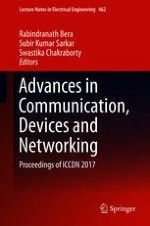The book provides insights of International Conference in Communication, Devices and Networking (ICCDN 2017) organized by the Department of Electronics and Communication Engineering, Sikkim Manipal Institute of Technology, Sikkim, India during 3 – 4 June, 2017. The book discusses latest research papers presented by researchers, engineers, academicians and industry professionals. It also assists both novice and experienced scientists and developers, to explore newer scopes, collect new ideas and establish new cooperation between research groups and exchange ideas, information, techniques and applications in the field of electronics, communication, devices and networking.
